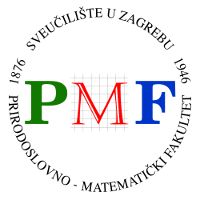Molecular Mechanisms of Aging
Teacher: dr. Ivica Rubelj, professor
Semester: third
ECTS: 3
Required course
Students are introduced to the molecular mechanisms of aging in different organisms; adoption of basic biological concepts for mathematical modelling.
Upon successful completion of the course, the student is expected to be familiar with:
- Basic concepts of aging.
- The most important theories of aging.
- Cellular aging: Metabolic, physiological and morphological changes of senescent cells; the stochastic nature of cellular aging.
- Molecular mechanisms of cell aging control: Telomere structure, their role in the cell, replication, their shortening dynamics; Shelterin, conformations, interactions with proteins; Subtelomeres, telomerase, telomeric systems in various organisms; Replication and abrupt shortening of telomeres; ALT – alternative lenghtening of telomeres.
- Experimental evidence for the mechanisms of aging: Telomerase expression in normal somatic cells; Accelerated aging syndromes in humans; Telomerase expression at the organism level; Elimination of old cells from the body; Re-expression of telomerase in an old organism.
- Methods and analyzes of telomere measurements at the level of individuals and population.
- Mechanisms of transition from normal to tumour cells and the interdependence of aging and carcinogenesis.
- Introduction: What is aging – basic concepts; Theories of aging (cellular aging, aging at the organism level, aging at the population level).
- Cell aging: Metabolic, physiological and morphological changes of cells; the stochastic nature of cellular aging.
- Molecular mechanisms of cell aging control: Telomere structure, their role in the cell, replication, their shortening dynamics; Shelterin, their conformations, their interactions with proteins; Subtelomeres, telomerase, telomeric systems in various organisms; Replication and abrupt shortening of telomeres; ALT – alternative lenghtening of telomeres.
- Experimental evidence for mechanisms of aging: Telomerase expression in normal somatic cells; Accelerated aging syndromes in humans; Telomerase expression at the organism level; Elimination of old cells from the body; Re-expression of telomerase in an old organism.
- Methods and analyzes of telomere measurements at the level of individuals and population.
- Statistical monitoring of population movements from the aspect of biometric parameters of aging.
- Theory of free radicals: What are free radicals in the cell, how they are formed and how they affect cell senescence.
- Imortalization: Mechanisms of transition from normal cell to tumour; interdependence of aging and carcinogenesis.


